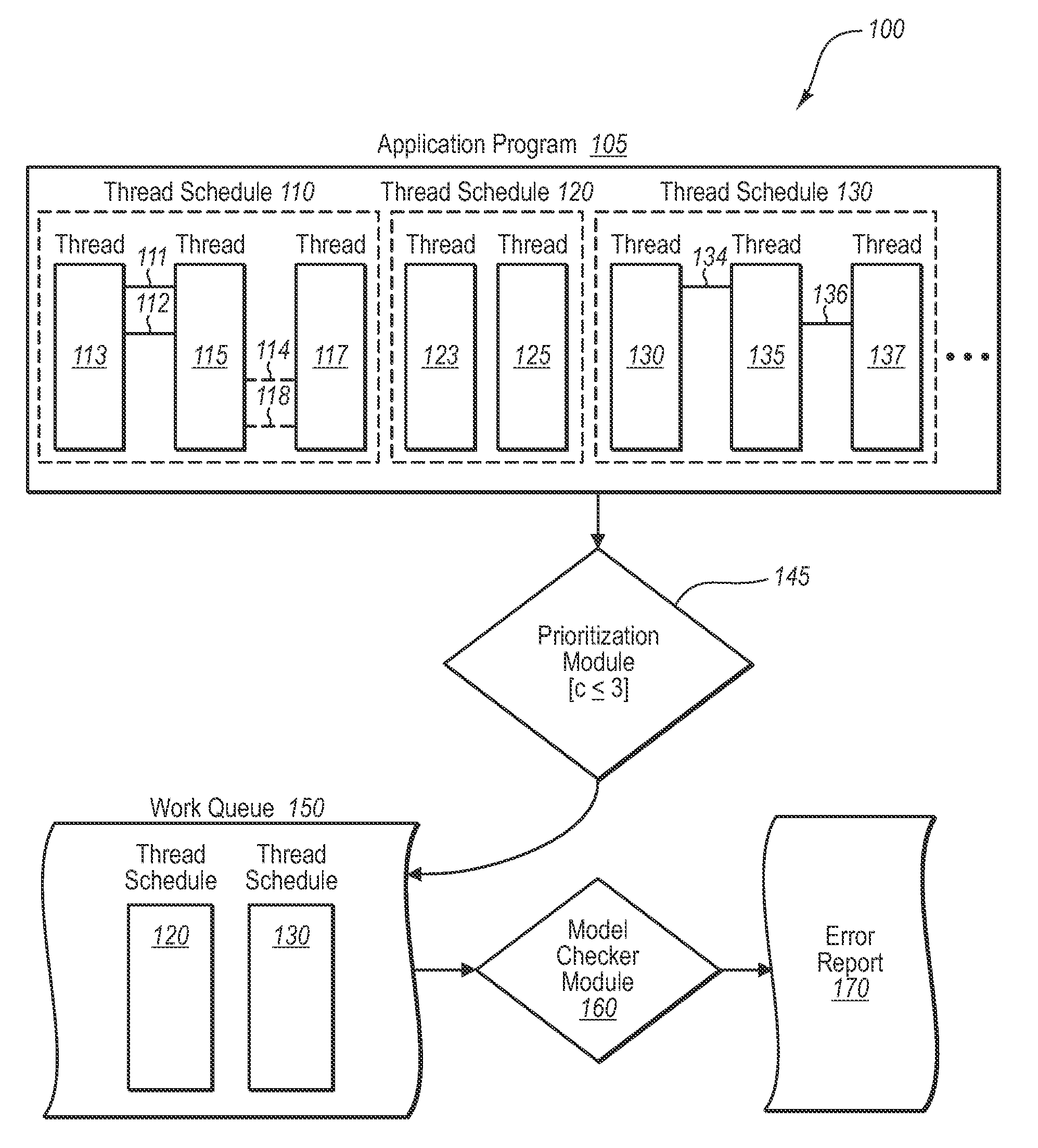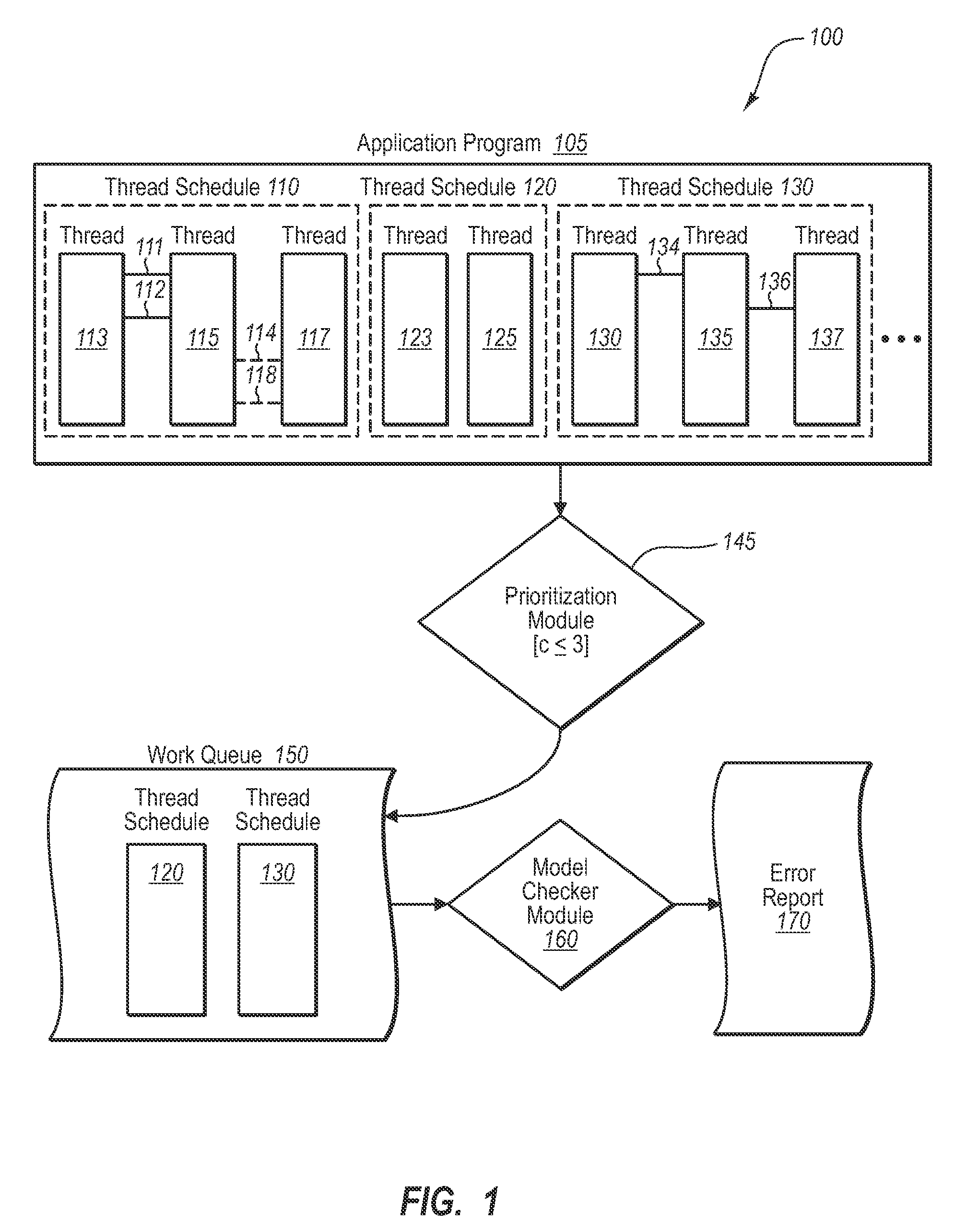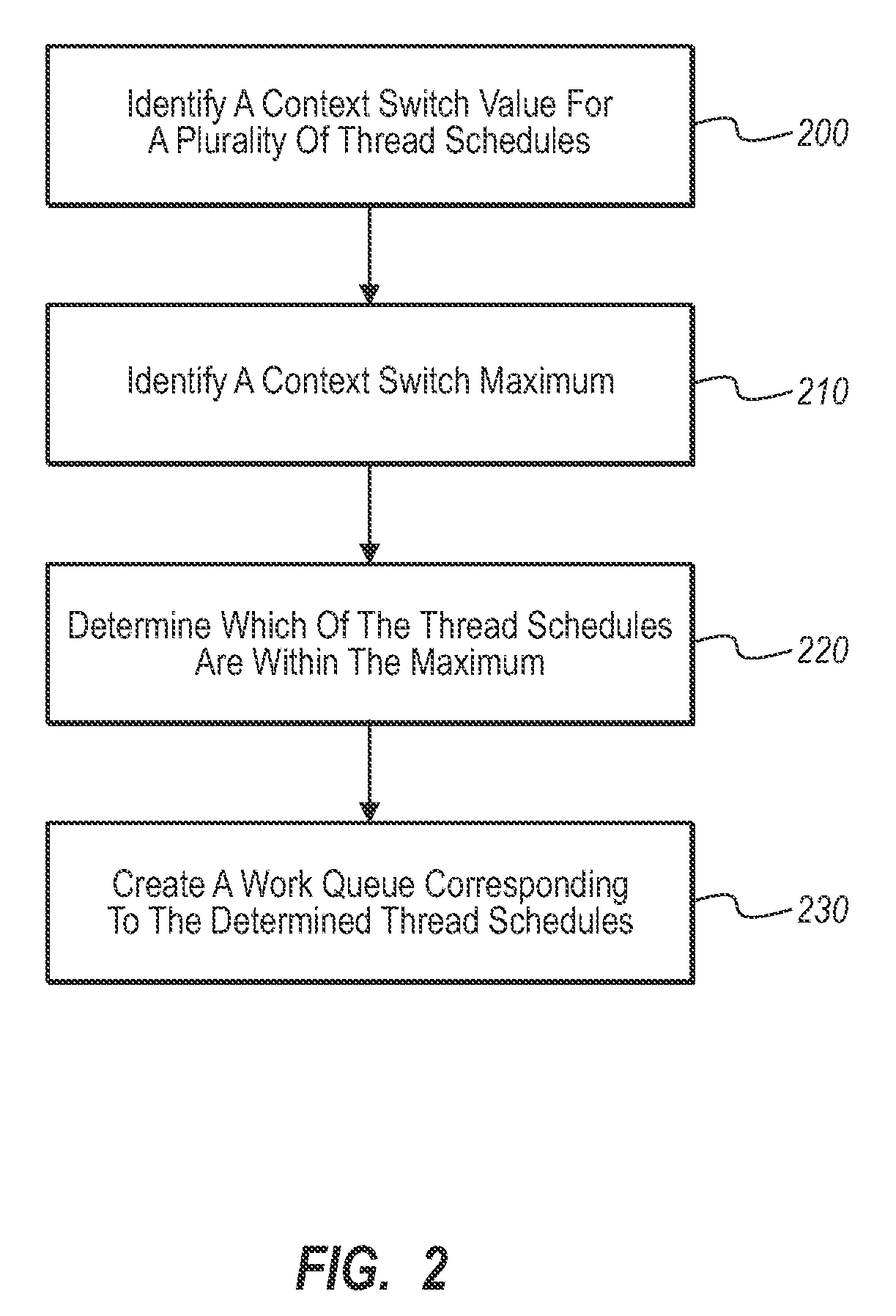Testing multi-thread software using prioritized context switch limits
- Summary
- Abstract
- Description
- Claims
- Application Information
AI Technical Summary
Benefits of technology
Problems solved by technology
Method used
Image
Examples
example 1
Iterative Context Bounding Algorithm
[0040]
Input: initial state s0 e State and context switch bound csb1struct WorkItem { State state; Tid tid; }2Queue workQueue;3Queue nextWorkQueue;4WorkItem w;5int currBound=0;6for t e enabled (s0) do7 workQueue.Add(WorkItem (s0, t));8end9while true do10 while workQueue.Empty( ) do11 w := workQueue.Front( );12 workQueue.Pop( );13 Search(w);14 end15 if nextWorkQueue.Empty( ) then16 Exit( );17 end18 currBound:= currBound+ 1;19 workQueue:= nextWorkQueue;20 nextWorkQueue.Clear( );21end22Search(WorkItem w) begin23 WorkItem x;24 State s;25 s := w.state.Execute(w.tid);26 if w.tid 2 enabled(s) then27 x :=WorkItem(s,w.tid);28 Search(x);29 for t e enabled(s) \ {w.tid} do30 x := WorkItem(s, t);31 nextWorkQueue.Push(x);32 end33 else34 for t 2 enabled(s) do35 x := WorkItem(s, t);36 Search(x);37 end38 end39end
[0041]As shown in the above code of Example 1, this algorithm takes as input the initi...
example 2
Pruning the Search
[0047]
if table.Contains(w.state) then return;endtable.Add(w.state);
[0048]In general, there are a number of different ways to execute a set of given threads in any given thread schedule in order to test the thread execution. In at least one implementation, for example, each given thread of a thread schedule is assigned a semaphore value, which can be requested by model checker module 160 from the operating system when creating the thread. By default, the semaphore value is set to some threshold value, such as “0.” The semaphore value can also be set to either increment or decrement, but never to fall below the particular threshold value. Thus, when model checker module 160 begins execution of a particular thread (e.g., 113), the semaphore value must be above the threshold value; and, moreover, that semaphore value is ultimately decremented at some point during execution, which causes a blocking action, and causes moving to another thread or thread schedule.
[0049]Fo...
PUM
 Login to View More
Login to View More Abstract
Description
Claims
Application Information
 Login to View More
Login to View More - R&D
- Intellectual Property
- Life Sciences
- Materials
- Tech Scout
- Unparalleled Data Quality
- Higher Quality Content
- 60% Fewer Hallucinations
Browse by: Latest US Patents, China's latest patents, Technical Efficacy Thesaurus, Application Domain, Technology Topic, Popular Technical Reports.
© 2025 PatSnap. All rights reserved.Legal|Privacy policy|Modern Slavery Act Transparency Statement|Sitemap|About US| Contact US: help@patsnap.com



